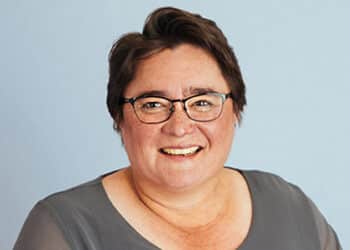In the ATO’s auditor independent standards guidance, the Code does not specify a number of referral sources, or set percentage of fees from one or more referral sources or clients, required to reduce independence threats to an acceptable level. Nor does it explain what constitutes a ‘large proportion’ of a firm’s total fees.
However, for well-established firms that generate most of their income from providing SMSF auditing services, as a guide, if the fees generated from one referral source are less than 20 per cent of the firm’s total fees, the ATO would not consider this in itself to create independence threats.
If the fees generated from one referral source are greater than 20 per cent of the firm’s total fees, depending on the circumstances, the independence threats may be significant enough to warrant the firm implementing appropriate safeguards to reduce those threats to an acceptable level.
This is ultimately a question of professional judgment for the auditor or firm to determine on a case-by-case basis, having regard to the particular facts. In some cases, a lower or greater threshold may be appropriate, when taking into account all relevant factors.
With the independence standards in place, SuperSphere director Belinda Aisbett said that whilst the process is more smoother for well-established practices, it is going to be very challenging for the new auditors that want to step into this space or those practitioners are stepping away from their firms because they can no longer do the audits in-house.
“If you’re a newly established audit practice, I imagine it’s going to be really challenging to hit that under 20 per cent benchmark threshold,” Ms Aisbett said in the SMSF Association Technical Summit 2021.
“What you will need to consider once you’re at the 20 per cent threshold or even having 40 or 60 per cent of your fees coming from one referral source is that while you get your ‘runs on the board’, you need make sure that you have appropriate safeguards in place to enable you to continue to do those 40 or 60 per cent of audits.”
Ms Aisbett said the simplest way to manage that is to engage another auditor to review a sample of the practice’s audit files and whilst it may seem costly and time consuming, it doesn’t necessarily have to be.
“As long as you’re getting some of your larger, problematic big-judgment kind of audit files reviewed and your external auditor says these audits have been done with appropriate audit evidence, appropriate consideration of your judgments and that your audit opinions are reasonable in these circumstances, that is your safeguard,” she noted.
“Even though the practice gets 40 or 60 per cent of its fees from this one referral source, you can make sure that the most tricky and problematic audit that the firm has can be passed by a peer review.”
“I’m not suggesting you only get one audit done, I don’t think that would be enough. You’re going to need to come up with a reasonable sample size, but don’t give your external reviewer all the simple ones because that’s not really a good test of whether you’re an independent auditor.”
A really good test of the firm’s independence is how it has treated the toughest client, the one where you have to report them to the ATO, according to Ms Aisbett. They are also the ones that firms actually want to have reviewed by an external auditor because that will give the firm greater comfort that it can actually cover off the independence threat.
“The reality is if the ATO comes in and wants to have a look at you and you’re getting 40 or 60 per cent of your fees from the one referral source, you can show them these safeguards, ‘here’s the audit file, the peer review that had been done, the ATO reporting along with the qualified audit opinion,” Ms Aisbett explained.
“You’ll be able to demonstrate what I would think quite easily that you have done an independent audit.”
“So, documentation is going to be a really big key especially for those that have got that relatively new audit practice and you can’t hit that 20 per cent or below the benchmark.”



What a load of self serving rubbish. If your business model is dominated by doing smsf audits you are going to be focusing on winning and retaining as many as possible. Independence is a state of mind and reflective of your overall dependence of relying on an income stream. Not much to do with where it comes from.